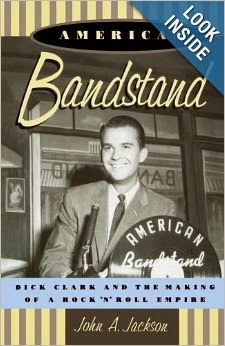American Bandstand to Radio 2
Imagine having your favorite television series like you do today except
that it would only be on radio. Imagine
American Idol, Scandal, Dancing with the Stars, The Blacklist, and CSI, only on
radio and without the visuals.
Here are some of the popular radio play presentations on radio during the infancy years of television:
· Dragnet (1949 - 1957): Dragnet enjoyed
an unprecedented popularity among ordinary citizens and law enforcement
personnel alike. The show was lauded for its positive portrayal of police
officers, so much so that upon the death of Jack Webb, Sergeant Joe Friday’s
badge number 714 was retired.
·
Minus One (1955-1958) Initially a revival of NBC’s short-lived Dimension X (1950-1951), X Minus One is a sci-fi lover’s
dream and is ranked among the finest science fiction dramas ever produced for
radio.
·
Tales of
the Texas Rangers (1950 - 1952)
Tales of the Texas Rangers aired from July 8, 1950 to September 14, 1952. As
were most of the Westerns made in the 1940s and 1950s, Tales of the Texas Rangers was idealistically patriotic, focusing on upholding
American laws and values. However, unlike most Westerns of the day, the show
had a contemporary setting, and based its realism in the procedures of the
modern Texas Rangers.
·
The 1940s had many more popular programs: the Shadow, and a handful of
variety shows.
American
Bandstand for those of us growing up in the time of our youth was the
equivalent to MTV. I can actually say
that sometimes after a while of listening to a hit song in the 60’s, I was
surprised when I finally got to see the singer or group on Bandstand.
·
It premiered locally in
late September 1952 as Bandstand on Philadelphia television
station WFIL-TV Channel 6 (now WPVI-TV), as a replacement for a weekday movie
that had shown predominantly British movies. Hosted by Bob Horn as a television
adjunct to his radio show of the same name on WFIL radio, Bandstand
mainly featured short musical films produced by Snader Telescriptions and Official
Films, with occasional studio guests. This incarnation was an early predecessor
of sorts of the music video shows that became popular in the 1980s, featuring
films that are themselves the ancestors of music videos.
·
Horn, however, was
disenchanted with the program, so he wanted to have the show changed to a dance
program, with teenagers dancing along on camera as the records played, based on
an idea that came from a radio show on WPEN, The 950 Club, hosted by Joe
Grady and Ed Hurst. This more-familiar version of Bandstand debuted on
October 7, 1952 in "Studio 'B'," which was located in their
just-completed addition to the original 1947 building in West Philadelphia
(4548 Market Street), and was hosted by Horn, with Lee Stewart as co-host until
1955. Stewart was the owner of a TV/Radio business in Philadelphia and even
though he was an older gentleman, his advertising account was a large one for
WFIL-TV at the time and was put on the program to appease the account. As WFIL
grew financially and the account became less important, Stewart wasn't needed
and was eventually dropped from the program. Tony Mammarella was the original
producer with Ed Yates as director. The short Snader and Official music films
continued in the short term, mainly to fill gaps as they changed dancers during
the show—a necessity, as the studio could not fit more than 200 teenagers.
- On July 9, 1956, Horn was fired after a
drunk-driving arrest, as WFIL and dual owner Walter Annenberg's The
Philadelphia Inquirer at the time were doing a series on drunken
driving. He was also involved in a prostitution ring and brought up on
morals charges. Horn was temporarily replaced by producer Tony Mammarella
before the job went to Dick Clark permanently. ~ From Wikipedia



No comments:
Post a Comment